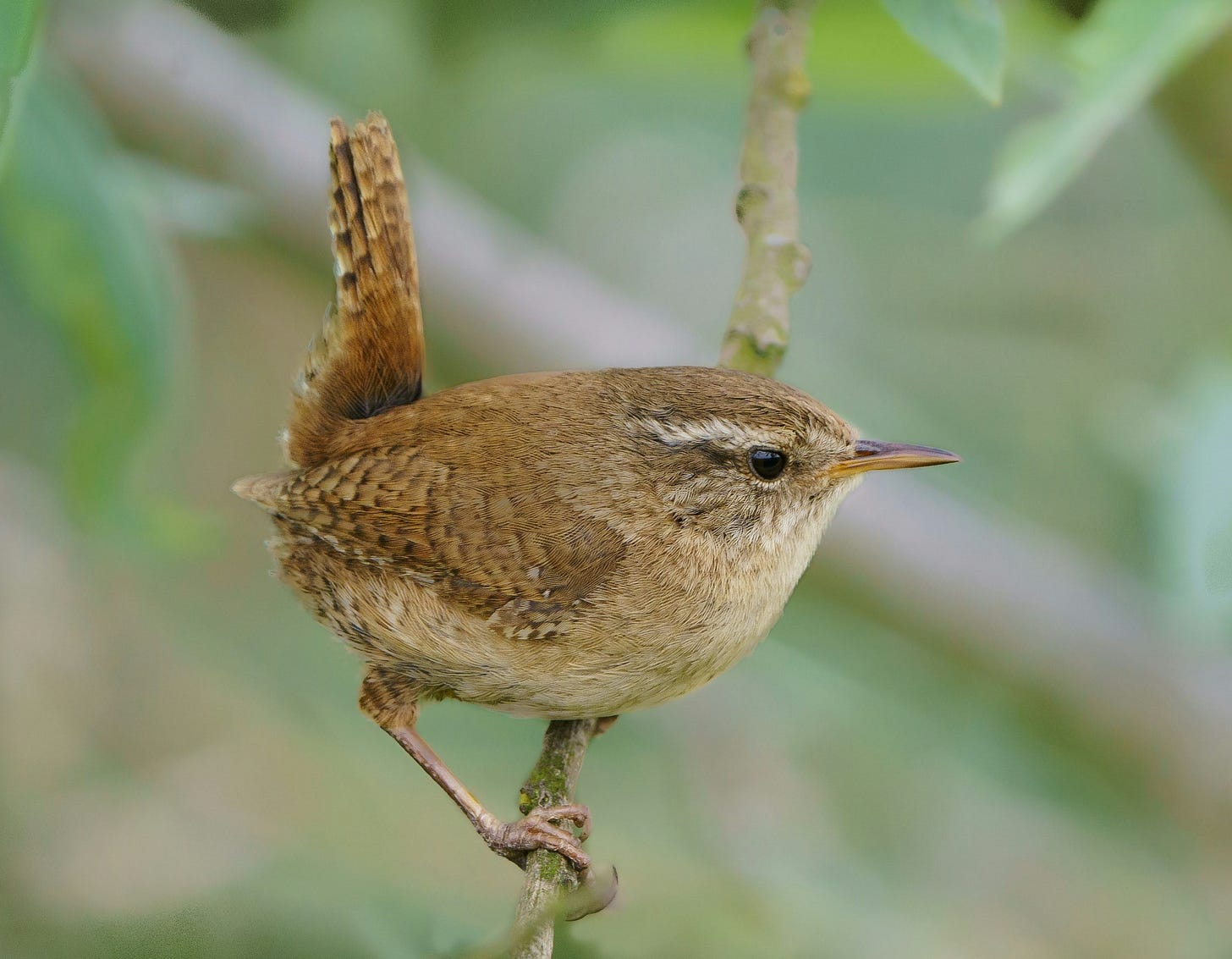
“Oh look, someone’s made a nest!”
It was a warm overcast day, the perfect time to tackle tidying my greenhouse (a long overdue task) As I cleared away plant pots and swept down my greenhouse bench, I spotted a perfectly shaped little birds nest, nestled amongst the eaves above my head.
I wonder what bird that could be? I thought. No doubt they had moved on by now, having established that nesting here was a bad idea. One of us, accompanied by the dogs, enter the greenhouse at least once a day. With all that activity, it was surely not a suitable place for a bird to raise their young.
So, I continued about my business, not thinking any more of it, until the following day. I opened the door of the greenhouse to be greeted by the rush of warmth, the smell of earth, and the flurry of wings as a small brown bird flew straight out of the nest and up onto the supporting beams. The bird looked at me for a moment with beady eyes, then disappeared through a hole at the back of the roof.
My heart raced from the adrenaline rush that accompanies an unexpected bird encounter. The bird I had seen was small, rounded, with a short tail that stuck up vertically. It was most certainly a wren.
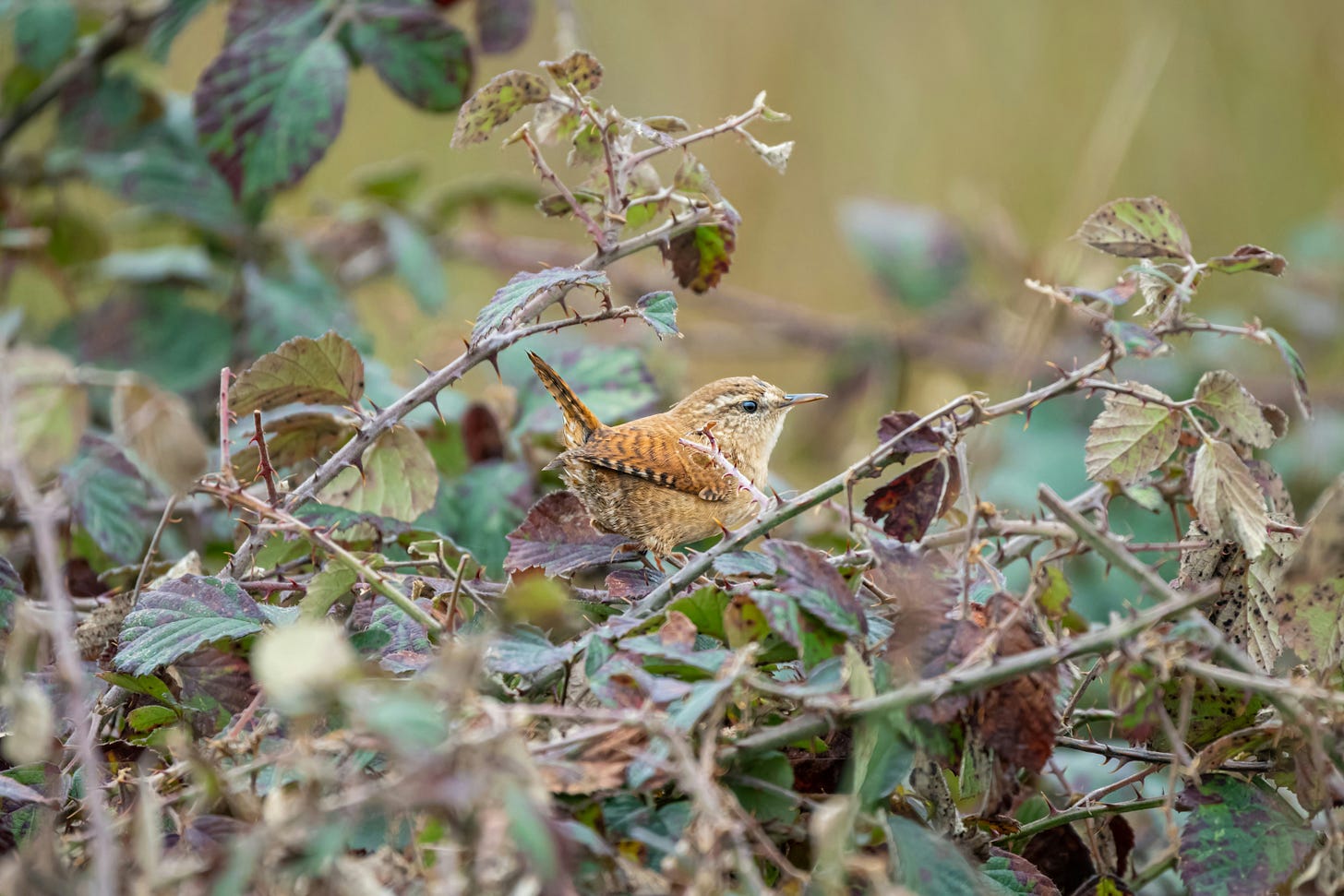
Eurasian wrens (known here simply as ‘wrens’) are one of the UK’s smallest birds. The Goldcrest takes the title of the very smallest, but the Wren can claim the title of the shortest. Measuring just 6-10cm in length, it is perhaps fitting that they were chosen to feature on the smallest British coin, the farthing. They are brown in colour with prominent pale eyebrows. Their cocked tail is a distinctive feature and tends to be repeatedly flicked as they restlessly flit from place to place.
Wrens can suffer from declines in population during severely cold winters, due to their tiny size making it difficult to keep warm. As a result, they will often engage in communal roosting, with as many as 60 wrens once being found in a nest box together. A reminder that nest boxes are not just useful to birds in the breeding season.
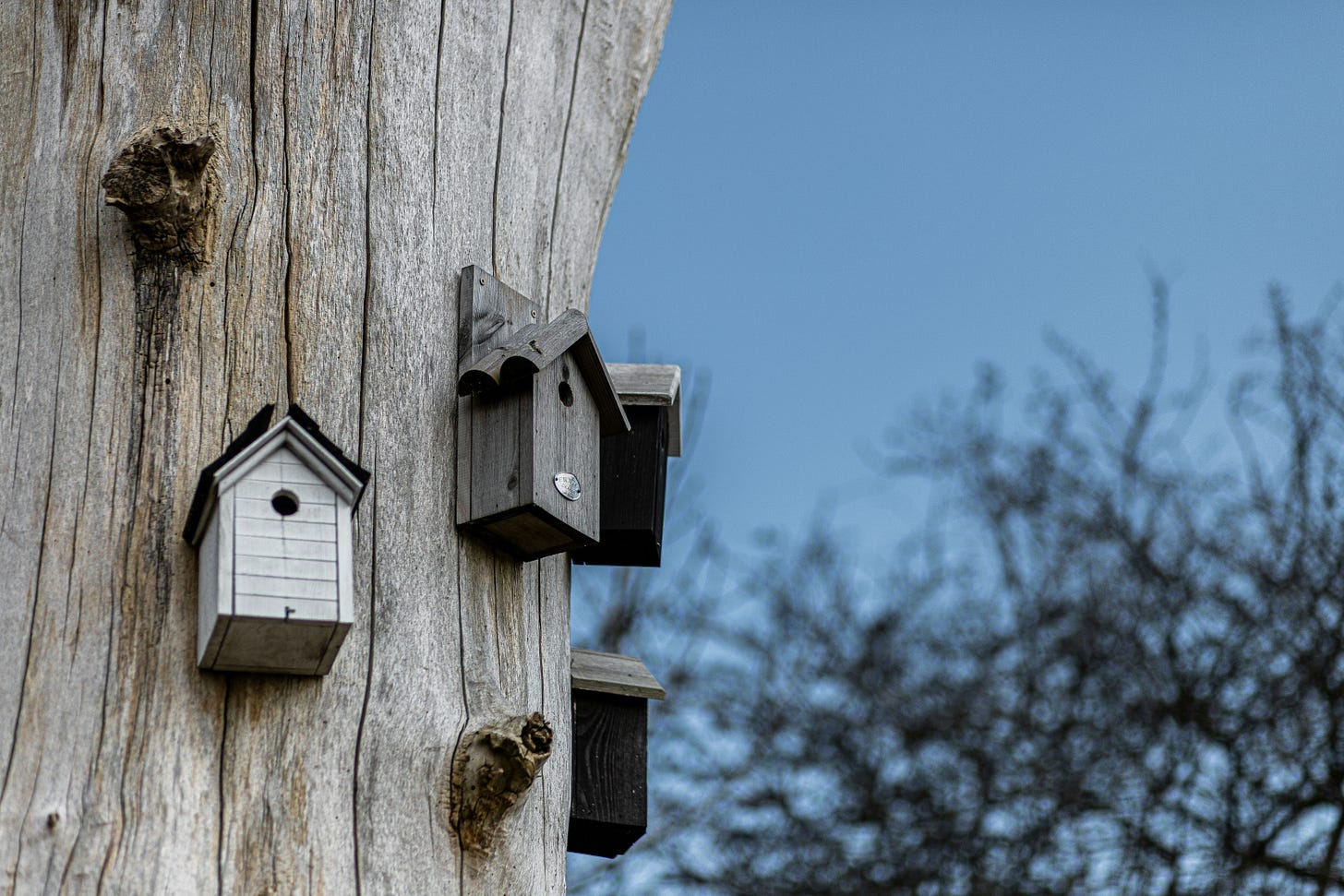
The Latin name for wrens is Troglodytes, which means cave dweller, due to their tendency to forage in dark crevices. Found in most habitats across the UK, from woodland, farmland, and heathland, to mature gardens: although wrens are the UK’s commonest breeding bird, (it’s estimated that there are around 8,500,000 breeding pairs of wrens in the UK) they are often difficult to see as they like to hide away in vegetation.
Therefore, it came as a huge surprise to me that one should choose to nest in such a prominent position, where it would likely encounter humans almost every day.
I took a closer look at the nest. It had been carefully constructed in a dome shape from straw, twigs and moss with a small entrance hole to provide protection against predators. Human contact aside, I think this wren was incredibly smart, as very few predators would be likely to get close to it in its current location.
Our greenhouse is built in the Victorian style but is a conversion of an old barn. It is rustic and imperfect and has lots of little gaps where small birds can sneak in under the roof and make themselves comfortable. I have had several experiences with birds getting into my greenhouse (a story for another post) but this was the first time they’d ever chosen to nest.
Male wrens will build several nests (from 6 to 12), and then the female gets to choose which one she prefers, at which point she will line it with feathers. Then the breeding begins, usually during late April by which time the males have claimed their territory.
I could see this nest had a few feathers poking out from it, so it appeared that it had been selected as a suitable place for the female wren to raise a family – how lucky for me!
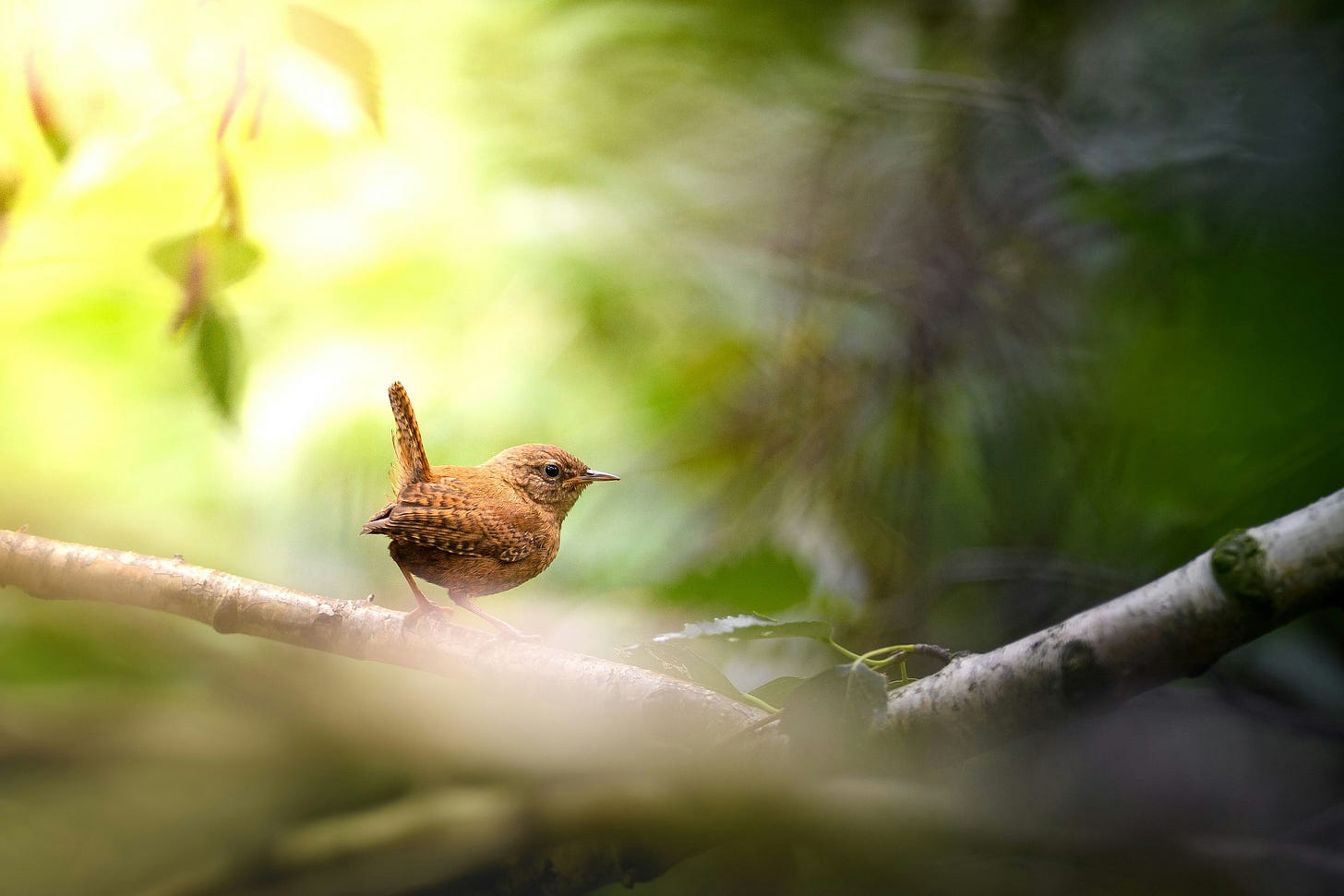
From then on, the wren and I developed an understanding. I would open the greenhouse door slowly and carefully, whispering ‘I’m so sorry to disturb you!’ At which point she would fly out of the nest, with a whirring of wings, land on the beam, then exit through her usual hole beneath the roof.
I did my best to keep my greenhouse duties to a minimum, so that she could return swiftly, once the coast was clear. I believe she may have also found an entrance into the nest at the back, via the orchard, where she didn’t have to be seen.
I half expected her to abandon her new place, after she realised that I was to be a regular visitor to her backyard. But she wasn’t put off, and before long, around mid-May, I heard the quiet cheep of baby birds and was delighted to see wide hungry beaks and black beady eyes peeking out of the nest.
Wrens have 1-2 clutches of eggs per year, containing 5-8 eggs. The female sits on the eggs for 13-18 days until they hatch, at which point they will be fed by both parents for up to 20 days until they fledge. Although male wrens will often have more than one mate. Who can blame them when they’ve gone to so much trouble to build all those nests? It would be a shame for them to go to waste.
Wrens are usually something that I see out of the corner of my eye, flitting secretively through the undergrowth and mostly remaining hidden from view. This encounter was a real treat. More recently, as I mentioned in my post April Delights, I’m finding I encounter wrens on a regular basis, from popping out of flower beds, to serenading us from the top of the greenhouse. They are clearly very at home on our plot.
There’s certainly nothing shy about this bird, when you consider its loud song. It always amazes me that such a powerful song can come from such a tiny bird – the loudest song of any UK bird in proportion to its size. Female wrens will listen to the vocal contests between the males before they choose a mate.
According to Songbird Survival :-
Despite its tiny size, the wren possesses a powerful voice that they use to declare their territories. Their song is rich and complex, often including trills, whistles, and chatters. Research has shown that wrens on different Welsh islands have songs that differ significantly from each other. It seems that wrens may develop their own ‘dialect’ of singing, especially when they are separated from each other by distance, just like humans!
If you would like to hear the song of the wren for yourself, you can do so here
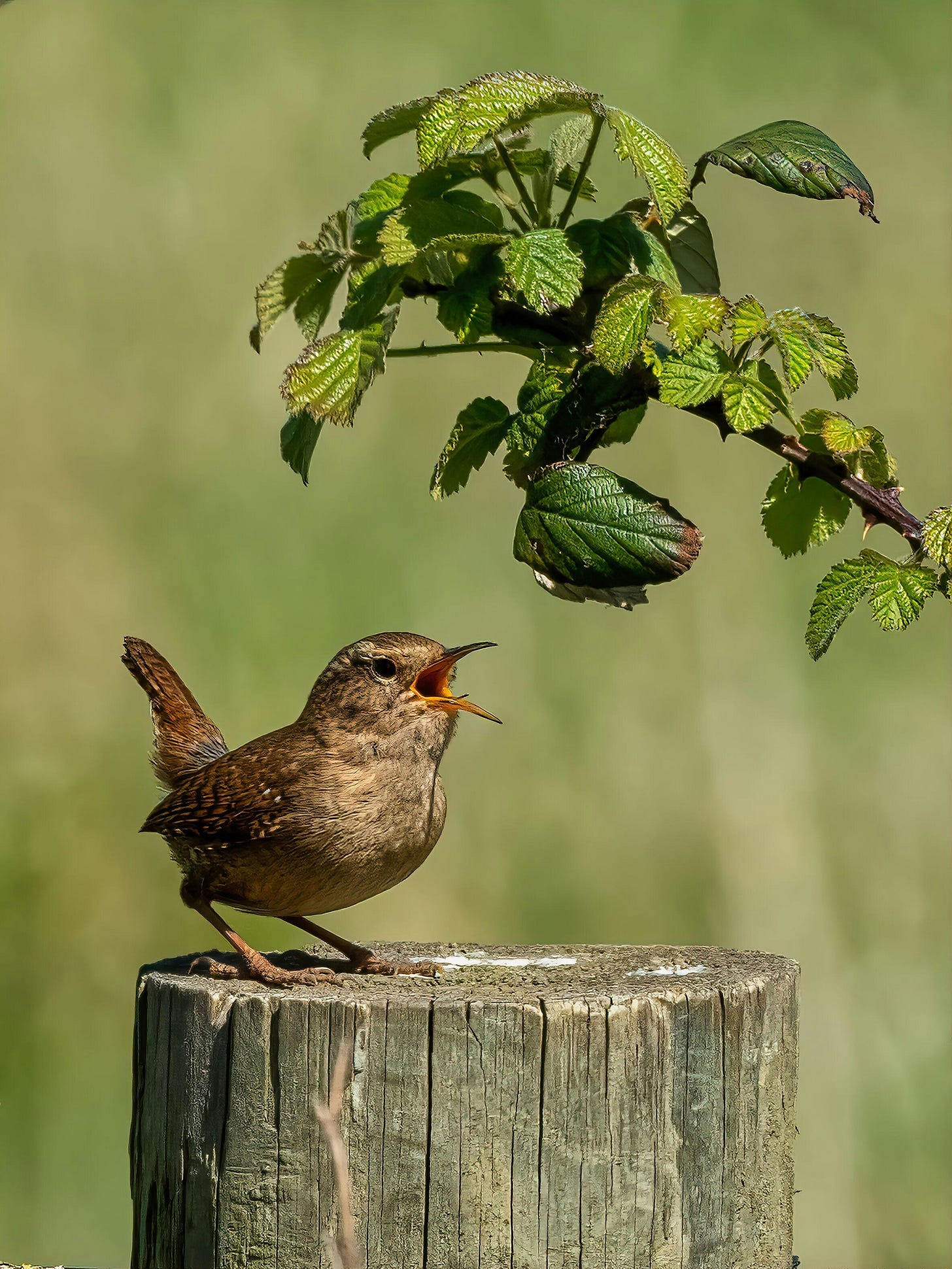
The wren is a bird that is deeply ingrained in European culture. ‘Wren day’ still takes place in some parts of Ireland on 26th December, when wren boys will parade through towns with a fake wren. Known as the ‘King of Birds’ in Europe, killing one is associated with bad luck. It even has its very own legend
Here’s one version of that story:-
The story goes that all the various birds met in order to elect a king and it was decided that the bird that could fly closest to the sun would be deemed the winner. The wren knew it would never make it on its own so hid under the eagle’s wing.
When the eagle had flown as close to the sun as he could and the other birds had fallen away, the wren popped out and was deemed to be the closest and so the king.
This myth may in fact have been originally created about the goldcrest, due to its yellow crown. However, when I see our little wren, tail cocked, singing his heart out on top of our greenhouse, surveying his empire – I think it suits him perfectly.
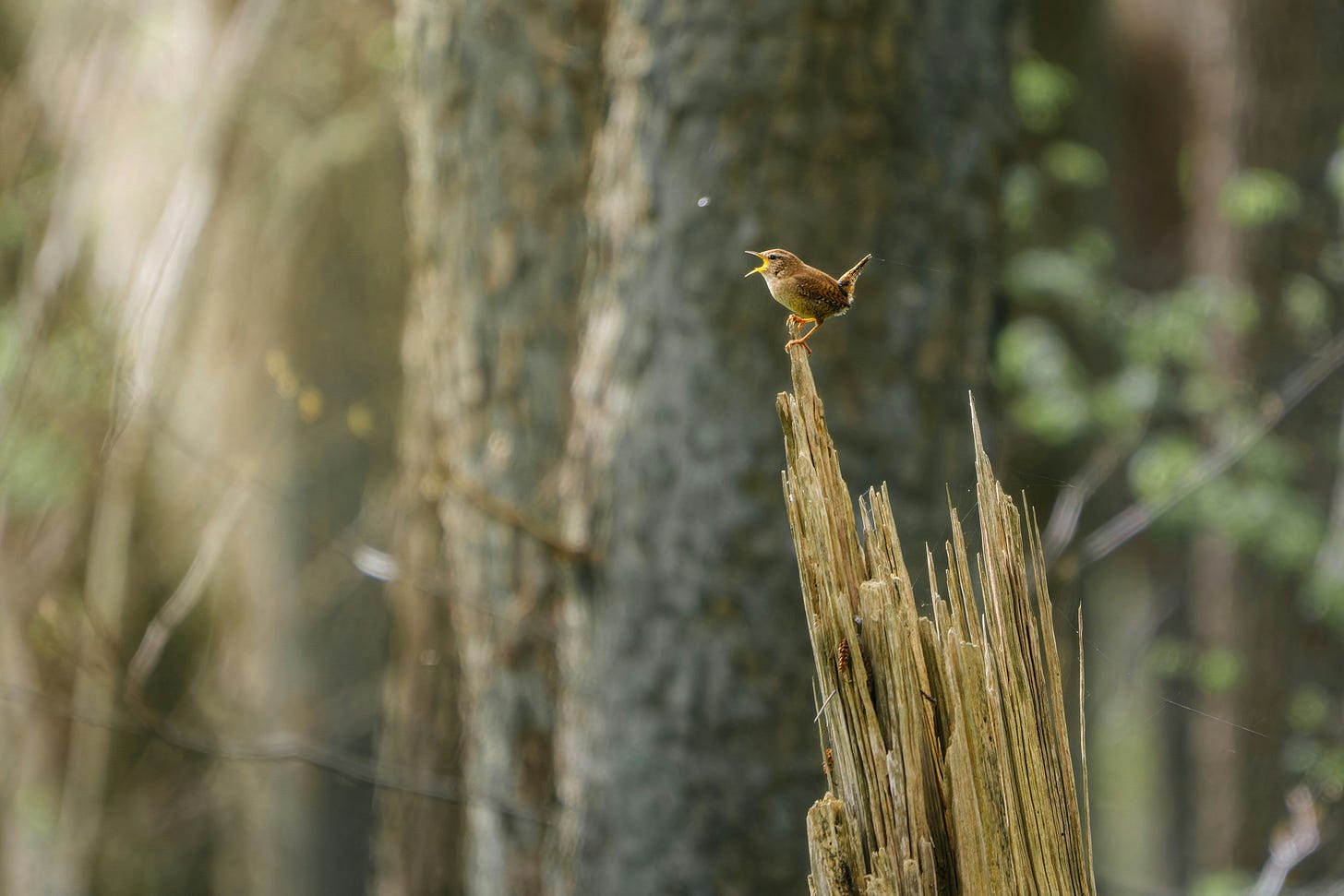
Visiting the greenhouse swiftly became my favourite part of the day. The adorable baby wrens would open their beaks and chirp at me, expecting food, as I quietly peeked into their nest. Wrens search for their prey by probing into crevices and leaf litter, and they feed on insects and spiders, but they will also eat seeds, berries and even tadpoles. So sorry little ones, I can’t help you there.
With the nest being just above eye level, it was truly the best experience I have ever had of watching a bird raise its young. I never could have expected that this would come from a bird that I previously considered elusive.
Then came the day when I tiptoed into the greenhouse for a sneak peek at my little friends and this time the nest was empty. My heart sank a little, although I was happy to know they had fledged successfully. Then I heard a loud ‘cheep’ from behind me, and turned around to see, not one, not two, but three baby wrens hopping from perch to perch.
I had timed it just right, catching the moment they fledged, as shortly afterwards they each found a space in the roof and disappeared.
Here’s a video I managed to capture of the moment:-
This year, the wren nest in my greenhouse remains empty, although there has been a little activity in a nest at the side of my house. Regardless of whether the greenhouse nest remains unused, I do know that somewhere on my plot, nesting is occurring. I captured this lovely moment on my wildlife camera, of a female wren picking up nesting material.
Since she is collecting feathers, I can take this to mean that somewhere nearby, a male wren has built her a nest that she considers suitable to furnish with the finest of feathers, ready for raising her brood. I felt incredibly lucky to be able to witness my wrens doing their thing so close up, and I still miss them. But I’m happy to know that they are still nearby, and that before too long there will be baby wrens on the property again.
I will leave you with a little note on the spiritual meaning of the wren:-
The spiritual meaning of the wren is one of determination, enthusiasm, change and happiness. The Celts held the little wren in high regard believing that the bird’s song was a message for the future.
The wren connects the three worlds, foraging underground, hiding under shrubs on the ground and of course in the air.
The wren teaches us to always be grateful and to count our blessings. Each and every morning think about the things we are grateful for. Goals can be achieved, one step at a times, determination to make progress will make it happen. Be persistent and be prepared to make changes where necessary.
The wren spirit animal message is one of happiness and persistence.
Happiness and persistence? Yes, I think that sums my little wren family up perfectly.
Do you have wrens where you are? If you live outside of the UK, what kind of wrens do you encounter?
INFORMATION SOURCES
https://www.rspb.org.uk/birds-and-wildlife/wren
https://www.songbird-survival.org.uk/post/10-facts-about-wrens-you-didnt-know
https://www.livingwithbirds.com/tweetapedia/21-facts-on-wren
https://www.peckamix.co.uk/bird-fact-file/wren
https://en.wikipedia.org/wiki/Wren
https://theconversation.com/wrens-day-an-old-irish-tradition-that-survives-today-246375




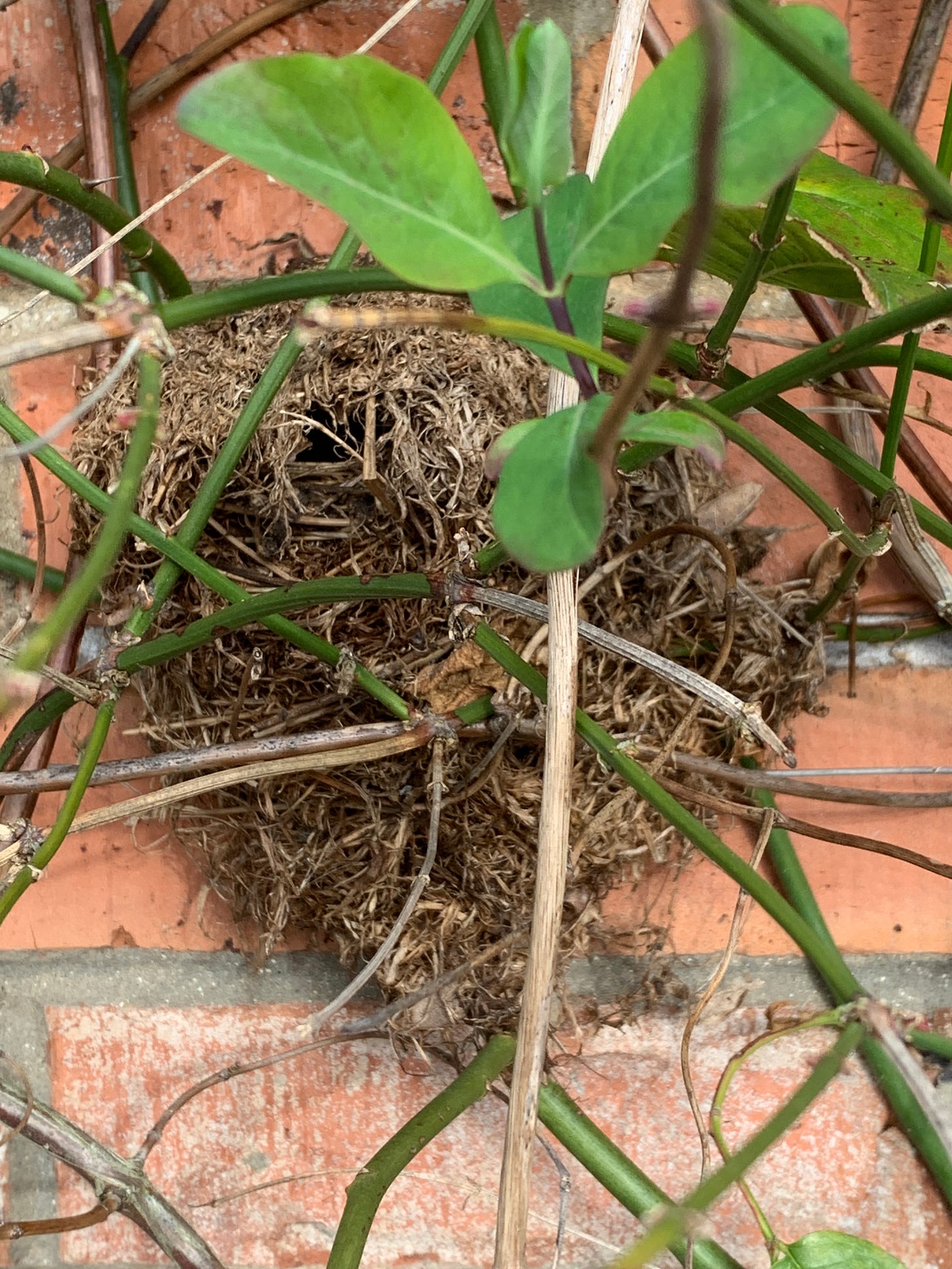
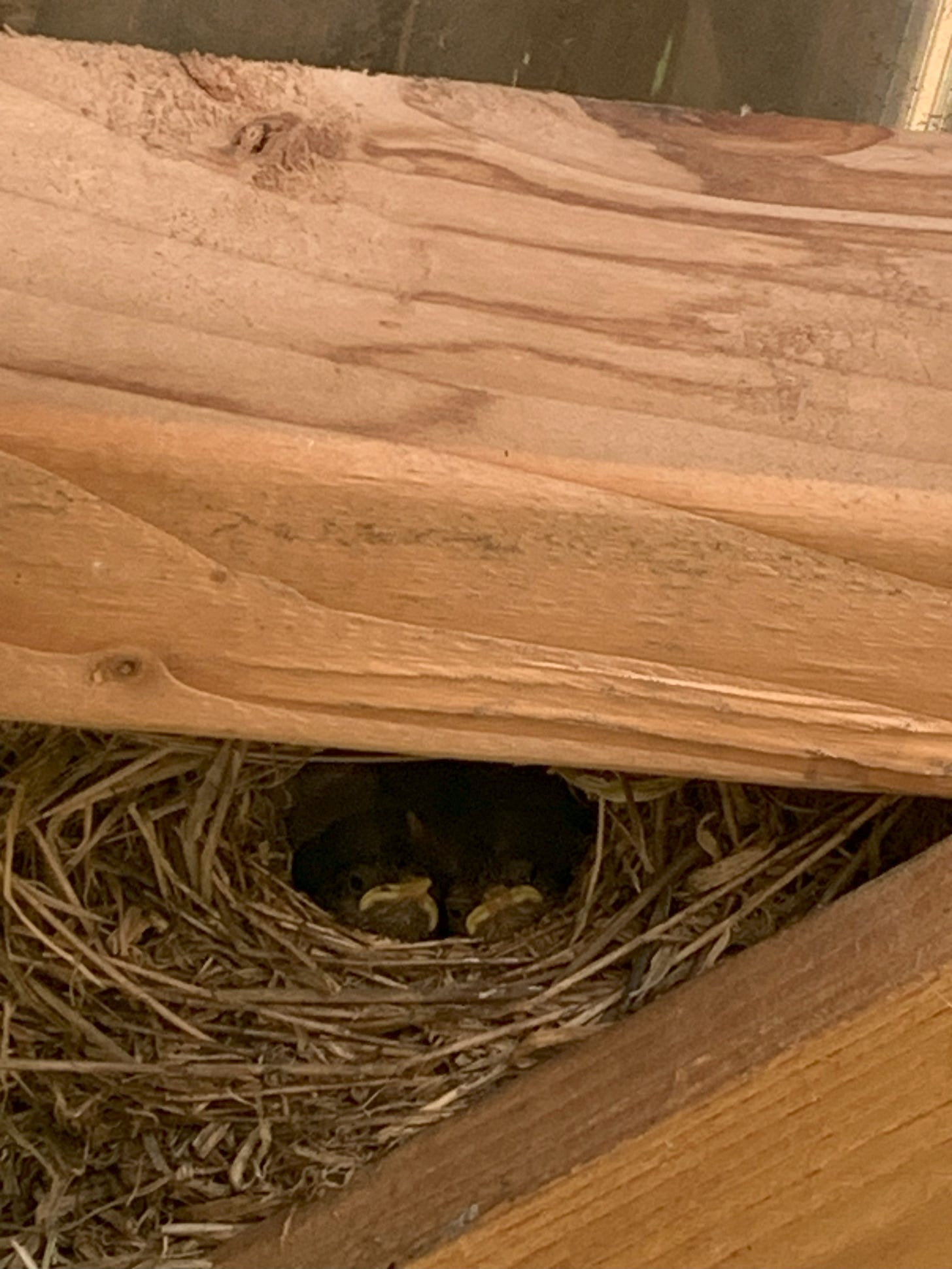
Thanks @Samantha Sear for the restack! It’s very much appreciated. Melissa 💚
Thanks for the restack @David Barton 😊🌿